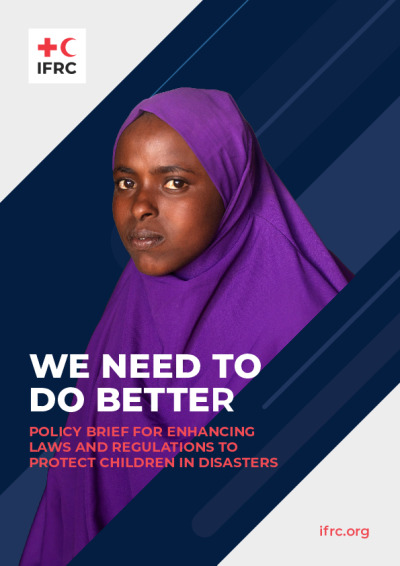Disaster Law and Child Protection: We Need To Do Better
As climate change is leading to more frequent disasters, children face many risks. These include separation from their families, psychosocial distress, SGBV, trafficking, missing school, premature adoption, losing essential documents, and not participating in decisions.
This IFRC study from 2020 found that many governments are missing or lack adequate laws, polices or regulations to protect children in disasters.
We need a transformative approach that focuses more on prevention not only response. The study recommends that Governments:
- Ensure relevant ministries and agencies are mandated to have in place contingency plans fully covering child protection
- Include child protection in relevant laws, regulations and policies on disaster risk management
- Mandate the collection and analysis of age-, gender- and disability-disaggregated data as part of risk assessments and relevant processes
- Draw inspiration, as appropriate, from the Alliance for Child Protection in Humanitarian Action’s Minimum Standards for Child Protection in Humanitarian Setting to cover key protection issues
- Take a coordinated, multi-level and interactive approach to implementation of domestic laws involving child protection; this includes allocating a budget, training personnel, and working with local-level governments and agencies too

